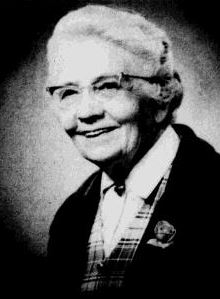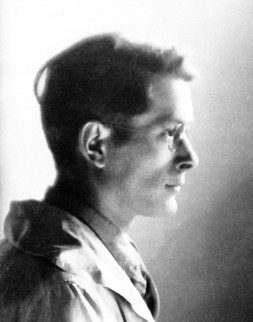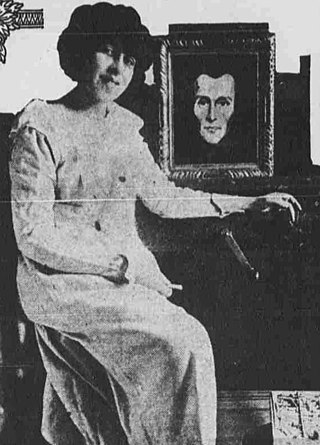Related Research Articles

Tyrus Wong was a Chinese-born American artist. He was a painter, animator, calligrapher, muralist, ceramicist, lithographer and kite maker, as well as a set designer and storyboard artist. One of the most-influential and celebrated Asian-American artists of the 20th century, Wong was also a film production illustrator, who worked for Disney and Warner Bros. He was a muralist for the Works Progress Administration (WPA), as well as a greeting card artist for Hallmark Cards. Most notably, he was the lead production illustrator on Disney's 1942 film Bambi, taking inspiration from Song dynasty art. He also served in the art department of many films, either as a set designer or storyboard artist, such as Rebel Without a Cause (1955), Around the World in 80 Days (1956), Rio Bravo (1959), The Music Man (1962), PT 109 (1963), The Great Race (1965), Harper (1966), The Green Berets (1968), and The Wild Bunch (1969), among others.

Karl Stanley Benjamin was an American painter of vibrant geometric abstractions, who rose to fame in 1959 as one of four Los Angeles–based Abstract Classicists and subsequently produced a critically acclaimed body of work that explores a vast array of color relationships. Working quietly at his home in Claremont, CA, he developed a rich vocabulary of colors and hard-edge shapes in masterful compositions of tightly balanced repose or high-spirited energy. At once intuitive and systematic, the artist was, in the words of critic Christopher Knight, "a colorist of great wit and inventiveness."
Paul John Wonner was an American artist best known for his still-life paintings done in an abstract expressionist style. Born in Tucson, Arizona, he received a B.A. in 1952, an M.A. in 1953, and an M.L.S. in 1955―all from the University of California, Berkeley. He rose to prominence in the 1950s as an abstract expressionist associated with the Bay Area Figurative Movement, along with his partner, Theophilus Brown, whom he met in 1952 while attending graduate school. In 1956, Wonner started painting a series of dreamlike male bathers and boys with bouquets. In 1962, he began teaching at the University of California, Los Angeles. By the end of the 1960s, he had abandoned his loose figurative style and focused exclusively on still lifes in a hyperrealist style. Wonner died April 23, 2008, in San Francisco, California.

Kathryn Woodman Leighton was an American artist, based in Los Angeles, California, best known for her Western landscapes and for portraits of Native Americans.

Kady Faulkner (1901–1977) was an American muralist, painter and art instructor who gained recognition in the middle of the 20th century. She has works in the permanent collections of the Smithsonian American Art Museum, the Pennsylvania Academy of the Fine Arts, and the Great Plains Art Museum, as well as others. She was selected to work on the United States post office murals project of the U.S. Treasury during the New Deal and completed a mural for the Valentine, Nebraska post office. A mosaic by Faulkner in Kenosha, Wisconsin adorns the former bakery on the Kemper Hall grounds. She was an associate professor of Art at the University of Nebraska–Lincoln between 1930 and 1950 and then instructed headed the Art Department at Kemper Hall until her retirement.
Edward Borein (1872–1945) was an American etcher and painter from California. His artwork depicted Spanish Colonial California, the Old West, and Mexico.

Cornelis Botke (1887-1954) was a Dutch-born American painter and etcher. He emigrated to the United States in 1930, and he first lived in Chicago before moving to Southern California. By the time of his death, his artwork hung in the New York Public Library, the Los Angeles Public Library, and the California State Library. His wife, Jessie Arms Botke, was also an artist.

Charles Rollo Peters was an American oil painter of nocturnes.
Lundy Siegriest was an American painter.

Harry Bowden (1907–1965) was an abstract painter who lived and worked both in New York and California. He showed in both group and solo exhibitions in Manhattan and San Francisco and was a founding member of American Abstract Artists. He is known both for fully abstract and for representative works, but the latter predominate. He once said a painter should embrace many ideas, symbols, forms, tones, and colors and through metamorphosis make them into a new thing — a painting having a life of its own. Having taken up photography as a mid-career hobby, he became as well known for his photographs as for his easel works.
Grant Reynard was an American painter, etcher, lithographer and illustrator.
Gary E. Zaruba was an American art educator, painter and potter. He was a professor of art at the University of Nebraska at Kearney, and the director of the Museum of Nebraska Art.
Dedrick Brandes Stuber was an American painter. He was born in New York City, and he became a painter in California in 1920. One of his paintings is at the Smithsonian American Art Museum in Washington, D.C.
John Hubbard Rich was an American illustrator, painter and art educator. He was the president of the California Art Club from 1944 to 1945.
Arthur Millier was a British-born American painter, etcher, printmaker, and art critic. He was the art critic for the Los Angeles Times from 1926 to 1958. His work is in the permanent collections of many museums in the United States.

Verena Marie Ruegg was an American painter, animator, and camerawoman. Her work was part of the painting event in the art competition at the 1932 Summer Olympics. During World War II, she worked in animation at Disney and Warner Brothers studios.

Nell Walker Warner was an American artist. Born in Nebraska, she was an oil painter in La Cañada Flintridge, California until she moved to Carmel-by-the-Sea in 1950. Her work is in the permanent collection of the Museum of Nebraska Art.
Angel De Service Espoy was a Spanish American painter. He was best known for his paintings of the California seascapes and landscapes of poppies and lupines. His landscapes and marine art were exhibited at the Los Angeles City Hall, Oakland Museum of California, Los Angeles Municipal Art Gallery and Loyola University. His style was influenced by the Barbizon school of painters.

Flossie Ivy Louise Verley, styled Ivy de Verley, was a Jamaican-born artist active in the United States and United Kingdom.

Gjura Stojana (1885-1974) was an American modernist painter and sculptor primarily identified with the Los Angeles-based modernist groups of the early 20th century.
References
- 1 2 3 4 "F. W. Vreeland, Artist, Dies". The Los Angeles Times. September 6, 1954. p. 5. Retrieved April 30, 2019– via Newspapers.com.
- ↑ "Hot Property: A Clipper Moors at a Beach Retreat". The Los Angeles Times. November 11, 2001. p. K15. Retrieved April 30, 2019– via Newspapers.com.
- 1 2 "Late L.A. Artist Rose Early to Note Effect of Dawn". The Los Angeles Times. September 12, 1954. p. 11. Retrieved April 30, 2019– via Newspapers.com.
- ↑ "Scholarships". School of Art, Art History & Design. University of Nebraska–Lincoln. Retrieved May 2, 2019.